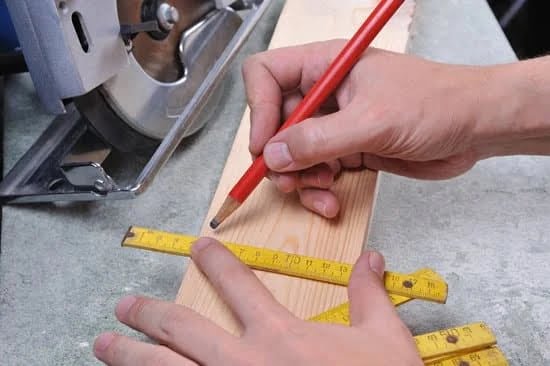English walnut is renowned for its exceptional qualities, making it a highly sought-after wood for woodworking and carving projects. The question many enthusiasts ask is, “Is English walnut good for woodworking or carving?” In this article, we will explore the versatility of English walnut in these creative fields and discover the various aspects that make it an excellent choice for woodworking and carving endeavors.
With a rich history and distinct characteristics, English walnut has been a popular choice for crafting exquisite furniture pieces, intricate carvings, and other artistic creations. Its beautiful grain patterns, smooth texture, and natural luster make it an ideal material for bringing creative visions to life.
In the following sections, we will delve into the history and characteristics of English walnut in woodworking and carving, uncover the benefits of using this wood in projects, explore tips and techniques for working with it, examine popular projects using English walnut, compare it to other wood types, and learn how to maintain and care for tools made from this remarkable material.
Let’s embark on a journey to harness the beauty and durability of English walnut in woodworking and carving.
History and Characteristics of English Walnut in Woodworking and Carving
English walnut, scientifically known as Juglans regia, is a popular choice for woodworking and carving due to its beautiful grain patterns and workability. This hardwood species is native to the Balkans, Persia, and Himalayas but is widely cultivated in various parts of the world today. English walnut is highly esteemed for its rich, chocolate brown color, and its fine texture provides a smooth finish when worked with hand or power tools.
One of the key characteristics that makes English walnut an excellent choice for woodworking and carving is its stability. Unlike many other types of wood, it has minimal movement when exposed to fluctuations in temperature and humidity. This means that projects made with English walnut are less likely to warp or crack over time. Additionally, English walnut is known for its durability and resistance to decay, making it a reliable option for long-lasting woodworking and carving creations.
In terms of carving, English walnut offers carvers the opportunity to showcase intricate details in their work. The fine texture allows for crisp lines and delicate designs to be achieved with ease. The natural luster of English walnut also enhances the overall aesthetic of carved pieces, giving them a timeless elegance. Whether it’s an ornate wooden figurine or a detailed relief carving, English walnut provides carvers with a versatile medium to bring their artistic visions to life.
| English Walnut Characteristics | Benefits |
|---|---|
| Rich chocolate brown color | Beautiful grain patterns |
| Minimal movement when exposed to fluctuations in temperature and humidity | Stability and resistance to warping or cracking |
| Fine texture that allows for detailed carving | Durability and long-lasting quality |
The Benefits of Using English Walnut in Woodworking and Carving Projects
English Walnut is a popular choice for woodworking and carving projects due to its unique qualities and ease of use. This wood is prized for its stunning grain patterns, rich color, and workability, making it a top choice for both beginners and experienced woodworkers. Whether you are creating intricate carvings or durable furniture pieces, English Walnut offers a range of benefits that make it stand out in the world of woodworking.
Stunning Aesthetic Appeal
One of the key benefits of using English Walnut in woodworking and carving is its stunning aesthetic appeal. The wood boasts a rich, chocolate brown color with beautiful grain patterns that add depth and character to any project. Whether used in furniture making, ornate carvings, or intricate details, the natural beauty of English Walnut enhances the overall visual appeal of the finished piece.
Workability and Durability
English Walnut is known for its workability, making it an ideal choice for woodworking and carving projects. The wood is relatively easy to cut, shape, carve, and sand, allowing artisans to create intricate designs with precision and ease. Additionally, English Walnut is durable and stable, ensuring that finished projects will withstand the test of time.
Versatility
Another benefit of using English Walnut in woodworking and carving projects is its versatility. This wood can be used to create a wide range of items including furniture, decorative carvings, knife handles, musical instruments, and more. Its versatility makes it a go-to choice for many artisans looking to experiment with different techniques and styles.
Tips and Techniques for Working With English Walnut in Woodworking and Carving
English walnut is a popular choice for woodworking and carving due to its beautiful grain patterns and ease of working with. Here are some tips and techniques for working with English walnut in woodworking and carving projects:
1. Sharp Tools: English walnut is a dense wood, so it is important to use sharp tools when working with it. Dull tools can cause tear-out and splintering, leading to a less than desirable finish. Keeping your chisels, gouges, and knives sharp will make the carving process much smoother.
2. Grain Orientation: Pay attention to the grain orientation when working with English walnut. The grain pattern of this wood can vary greatly, so it is important to plan your cuts and carving direction accordingly to achieve the desired result.
3. Finishing: English walnut has a natural luster that can be enhanced by using the right finishing techniques. Consider using oil-based finishes or varnishes to bring out the rich color and grain pattern of the wood.
In addition, English Walnut is often used due to its stability and resistance to warping, making it a reliable choice for woodworking projects where durability is key.
| Tips and Techniques for Working With English Walnut | Woodworking Projects Using English Walnut |
|---|---|
| Use sharp tools when working with English walnut | Tables, chairs, cabinets |
| Pay attention to grain orientation | Bowls, cutting boards |
| Finish with oil-based finishes or varnishes | Sculptures, figurines |
Popular Woodworking and Carving Projects Using English Walnut
English walnut is an excellent choice for a wide variety of woodworking and carving projects due to its beautiful color, fine grain, and ease of working. Whether you are a beginner or an experienced woodworker or carver, English walnut can be used to create stunning pieces that showcase its natural elegance. Here are some popular woodworking and carving projects that make use of English Walnut:
- Hand-carved bowls and utensils: English walnut’s smooth texture and rich color make it an ideal choice for creating functional and decorative bowls, spoons, spatulas, and other kitchen utensils.
- Fine furniture: The beauty and durability of English walnut make it a popular choice for crafting high-quality furniture such as tables, chairs, cabinets, and desks. Its rich brown color adds warmth to any room.
- Decorative carvings: From intricate sculptures to detailed reliefs, English walnut is well-suited for creating decorative carvings that highlight the wood’s natural beauty. Its fine grain allows for precision in intricate designs.
Woodworkers and carvers appreciate the versatility of English walnut because it can be used in both traditional and contemporary projects. From classic furniture designs to modern art pieces, this wood provides a timeless appeal that complements any style. The unique characteristics of English walnut make it a favorite among artisans who value both aesthetics and functionality.
The richness of the wood also makes it an excellent choice for creating heirloom pieces that can be passed down through generations. Whether you are creating a cherished family dining table or a one-of-a-kind sculpture, English walnut’s beauty and durability ensure that your work will stand the test of time. Overall, when it comes to woodworking or carving projects, using English Walnut is always guaranteed to result in an exquisite finished product.
Comparing English Walnut to Other Wood Types for Woodworking and Carving
When it comes to woodworking and carving, choosing the right type of wood is crucial for the success of your project. English walnut, known for its rich color and fine grain, is often a popular choice among woodworkers and carvers. However, how does it compare to other wood types commonly used in these crafts?
- Maple: Maple is a versatile wood often used in woodworking and carving due to its durability and attractive light color. It is an excellent choice for intricate carving work but may not have the same warmth as English walnut.
- Cherry: Cherry wood is valued for its rich color that deepens over time and its smooth finish. It is a popular choice for furniture making, but may not have the same distinct grain pattern as English walnut.
- Mahogany: Mahogany is a dense, durable hardwood with a reddish-brown color that can resemble English walnut. While mahogany is great for fine carving details, it may be harder to work with than English walnut.
Each type of wood has its unique characteristics that make it suitable for specific woodworking or carving projects. While English walnut offers a balance of beauty and workability, considering the specific requirements of your project will help you determine if it is the best choice.
Ultimately, when comparing English walnut to other wood types for woodworking and carving, it becomes clear that each has its own advantages and drawbacks. Whether you prioritize rich color, fine grain, ease of carving, or durability will determine which wood type is most suitable for your particular project. It’s important to consider these factors carefully to ensure the success of your woodworking or carving endeavor.
Maintaining and Caring for English Walnut Woodworking and Carving Tools
Meticulous maintenance and proper care of woodworking and carving tools are crucial to ensure the longevity and performance of these tools when working with English walnut. Whether you are using chisels, gouges, saws, or other hand tools, it is important to follow specific guidelines to keep them in top condition for working with this exceptional wood.
Proper Storage
One of the key aspects of maintaining woodworking and carving tools is ensuring they are stored properly to prevent damage. English walnut is a relatively soft wood compared to some others, so it’s important to keep your tools in a dry environment to avoid any moisture that could lead to rust or corrosion. Opting for a tool chest or cabinet with adequate padding can also prevent unnecessary wear and tear on your tools.
Regular Cleaning
Regular cleaning of woodworking and carving tools is essential for their upkeep. After each use, it is recommended to wipe down the tools with a clean cloth and apply a thin layer of oil or wax to protect them from moisture and prevent rust. Additionally, keeping cutting edges sharp not only enhances the quality of your work but also reduces the risk of accidents while working with English walnut.
Sharpening and Honing
Maintaining sharp edges on your woodworking and carving tools is especially important when working with English walnut. Regular sharpening and honing of chisels, gouges, and other cutting tools will not only improve their performance but also make the woodworking process smoother and more precise. Investing in high-quality sharpening stones or honing guides can help achieve optimal results when sharpening English walnut carpentry tools.is english walnut good for woodworking or carving.
Conclusion
In conclusion, English walnut is indeed a fantastic choice for woodworking and carving projects. Its beautiful grain patterns, rich color, and durability make it a popular option among woodworkers and carvers. The history and characteristics of English walnut show that it has been valued for centuries for its quality and versatility. The benefits of using English walnut in woodworking and carving are numerous, including its workability, stability, and the stunning finished products it can produce.
When working with English walnut in woodworking and carving projects, there are some tips and techniques to keep in mind. Proper tool maintenance is crucial to ensure the best results when using English walnut. Additionally, comparing English walnut to other wood types for woodworking and carving highlights its unique qualities that set it apart from the rest.
Overall, English walnut is a top choice for woodworking and carving due to its beauty, durability, and versatile nature. Whether creating furniture, decorative pieces, or intricate carvings, English walnut exceeds expectations. It’s clear that English walnut is indeed good for woodworking or carving given its outstanding qualities that make it a favorite among craftsmen.
Frequently Asked Questions
What Is the Best Walnut for Carving?
The best walnut for carving is usually the butternut or white walnut. These varieties are softer and easier to work with, making them more suitable for intricate carving details and designs.
What Is the Difference Between English Walnut and Black Walnut Woodworking?
The main difference between English walnut and black walnut woodworking is the color and hardness of the wood. English walnut is lighter in color and generally easier to work with, while black walnut is darker and harder, making it more suitable for heavy-duty woodworking projects.
Is English Walnut Wood Valuable?
English walnut wood is considered valuable in the woodworking industry due to its attractive grain patterns, easy workability, and versatility in usage. It is often used in high-end furniture making, gun stocks, musical instruments, and other fine woodworking projects due to its desirable characteristics.

Hi everyone! I’m a woodworker and blogger, and this is my woodworking blog. In my blog, I share tips and tricks for woodworkers of all skill levels, as well as project ideas that you can try yourself.





